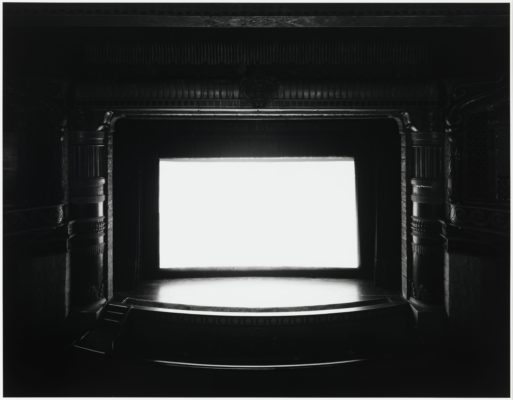Search
To search for an exact match, type the word or phrase you want in quotation marks.
A*DESK has been offering since 2002 contents about criticism and contemporary art. A*DESK has become consolidated thanks to all those who have believed in the project, all those who have followed us, debating, participating and collaborating. Many people have collaborated with A*DESK, and continue to do so. Their efforts, knowledge and belief in the project are what make it grow internationally. At A*DESK we have also generated work for over one hundred professionals in culture, from small collaborations with reviews and classes, to more prolonged and intense collaborations.
At A*DESK we believe in the need for free and universal access to culture and knowledge. We want to carry on being independent, remaining open to more ideas and opinions. If you believe in A*DESK, we need your backing to be able to continue. You can now participate in the project by supporting it. You can choose how much you want to contribute to the project.
You can decide how much you want to bring to the project.

“—His eyes are opened—she said.
—This is what they do when they die. – Ingrid explained–. They open their eyes, but they don’t see”.
Austin Wright
Samuel Beckett says somewhere that silence does not exist until named. For the Irish writer silence was a bottomless abyss. John Cage would say that silence does not exist, not even when we mention it. The 20thcentury music set out debates and proposals of works in which the absence of sound –or the itinerancy between the sound and silence – was crucial.
What about the art? Visuality seems so solid compared with music. Things are there to be seen (or to see us, as those verses by Machado say), it seems that visual silence does not exist, that we cannot stop looking, although it seems that sometimes we do not see anything.
The project with which Alexandra Laudo won one of the calls of Comisart and that is now shown in Caixaforum in Barcelona, “A Certain Darkness” is a curatorial proposal of great intelligence. And necessary. We are used to go to exhibitions to look at imaged, objects or videos, among other things. Laudo invites us to stop in the previous THINGs that encapsulate this look: the frame, the projection, the base, the hanging work, the piece of cardboard, the exhibition, the art centre… something like the absence (muteness?) of images that are there, but that we look in an ordinary way, with indifference, disinterested.
I write that the proposal is necessary. I have the impression that in our time, in which there is visuality, we are immersed in the models of the homo vidense Sartori, of the mosaic culture of Abraham Moles, of the icononaut of Gian Piero Brunetta, of the panoptic society of Foucault, and of so many other contributions that underline the multivisual or pluriconic paradigm of our times, we have to stop and think about the mechanisms of visuality. Contemporary mechanisms and their tribute to those inherited mechanisms: the submissive contemplation of the art of the past, the museums as deideologized cemeteries of art, the almost religious sacralisation of the artistic object…
I confess that the starting point of the project, the theft of the Giaconda in August of 1911 and that the gap left in Salon Carré is the most visited in the history of museums, captivated me at first. I talk about this in my lessons as a symptom of many things. If people went to look at the “absence of painting”, what did they see? Let’s say it clearly: the wall, some nails and a poster, that is to say, the devices of the exhibition prior to the exhibition itself, which supposedly makes the visitor’s gaze possible. MacLuhan’s statement comes to my mind, by message, it is not so important what we see, but where and how we see it. In this sense, I do not think that for the audience of that time the Veronese of above, the Correggio of the right or the Titian of the left that had accompanied Mona Lisa by Leonardo were significant until her subtraction.

Would not this be the ill-fated birth before time of the museum spectacle, the one of the empty gaze and the null effort? Writings on art have insisted on (presumed) truths and have dispelled doubts; on concordances rather than dissonances. But it is essential to confront the denials, the losses, the paradoxes that our profession offers us. Not only as a rhetorical strategy. In contemporary visuality we have to reflect on the artist from nowhere; the will to escape from the whirlpool of meaning; the possibility that the pieces that lead nowhere are precisely those that ask the most irreverent and breaking questions; we have to respond to some aspects of the crisis of representation; and, above all, as Laudo proposes, we must rethink the contemporary gaze. Perhaps, in the line that Ranceière points out to us when he says that looking is the opposite of knowing.
I finish with a doubt. Comisart has become a curatorial phenomenon of great suggestions: to delve into the art collection of “la Caixa” (the real museum of Catalan contemporary art, if I may use the “semiboudate”) to rethink it. I do not know if Alexandra Laudo’s claim of absence with her project has been too demanded by the convocation itself, or the institution. I think that the “display” of the exhibition, this provocation to the gaze of the one who looks for works and finds nothing but “walls” (i.e. devices), would have worked better by altering much more the canons of the exhibition of contemporary art. Perhaps I am wrong.
In any case, this “certain darkness” is, mutatis mutandis, a “certain glow” in the Catalan exhibition panorama.


"A desk is a dangerous place from which to watch the world" (John Le Carré)